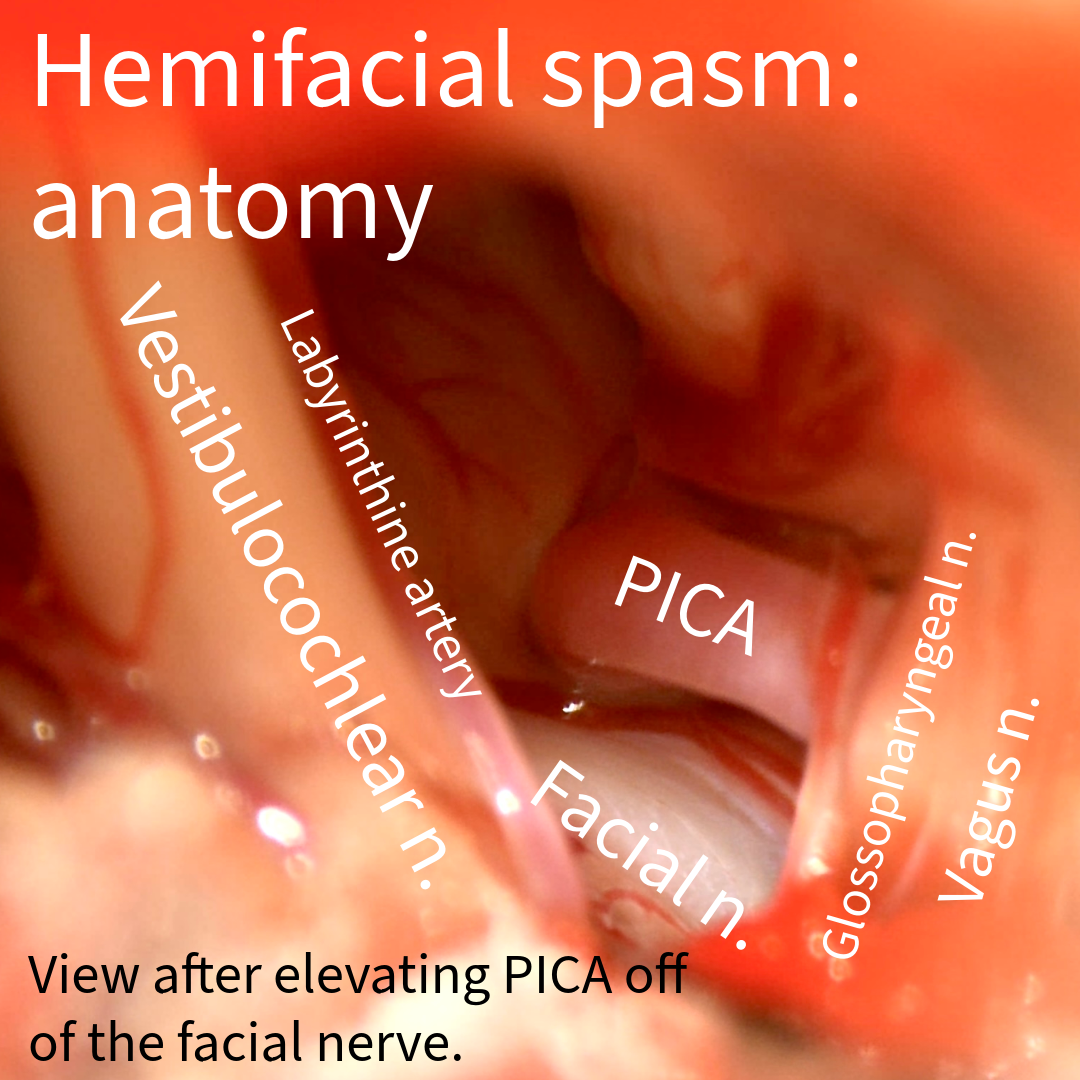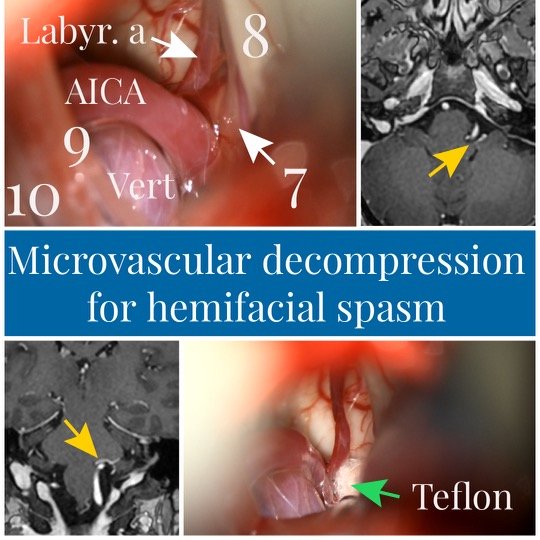Hemifacial Spasm
Hemifacial spasm is a neurologic disorder in which there is uncontrollable twitching of one side of the face. Twitching usually begins around the eye, and, over time, it extends to include muscles of the lower face around the mouth. Although hemifacial spasm is not dangerous, it can cause stress and social anxiety, interfere with vision, and result in cosmetic changes and facial weakness.
Movements of the face are controlled by the facial nerve. Hemifacial spasm is generally caused by irritation of the facial nerve where it emerges from the brain. The most common source of irritation is compression by a nearby blood vessel. Each time the blood vessel pulsates with the heart, it bumps up against the nerve, eventually causing the nerve to misfire and the face to twitch.
Hemifacial spasm is diagnosed by taking a history of your symptoms and performing a physical exam. There is no blood test or X-ray to diagnose hemifacial spasm, though a brain MRI can be helpful in supporting the diagnosis.
The primary treatment for hemifacial spasm is botulinum toxin ("botox"). These injections temporarily paralyze muscles in the face, making the twitching less noticeable. This is not a cure for hemifacial spasm, and the injections need to be repeated every few months. Botox results can be inconsistent, and, when used for years, these injections can result in permanent cosmetic changes from facial weakness and muscle atrophy.
For patients who no longer wish to continue botox injections or who have had diminishing effectiveness of the injections over time, microvascular decompression (MVD) is an effective surgical option. MVD is a procedure also performed for facial pain disorders such as trigeminal neuralgia and glossopharyngeal neuralgia. In this procedure, the facial nerve and compressive blood vessel are dissected apart and permanently separated with a tiny piece of teflon padding.
Microvascular decompression is very effective for hemifacial spasm, with 80-90% of patients experiencing long-term relief of their facial twitching. Click here to review my MVD guide for my patients who are having surgery.
If you live near Denver and have hemifacial spasm that has not improved to your satisfaction with botox, please consider meeting me in consultation to learn about the role of surgery.





